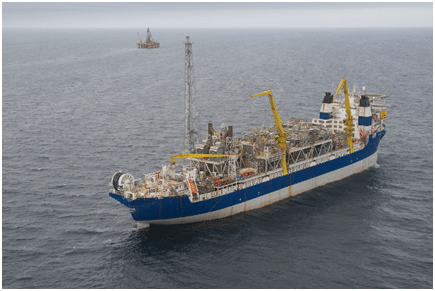The Huldra field is located in blocks 30/2 and 30/3 of the North Sea. Operated by Statoil, the gas and condensate field lies at a depth of 125m and is about 16km away from the company’s Veslefrikk field.
Statoil owns a 19.87% interest in the field. Other licensees include Petoro (31.95%), Total E&P Norge (24.33%), ConocoPhillips Skandinavia (23.33%) and Talisman Resources (0.49%). About Nkr6.3bn was invested in the development of the field.
irst production was achieved in November 2001. Production from the field ended in September 2014 and the platform was subsequently shut down. Statoil plans to fully decommission the field between 2019 and 2021. It also plans to sell the Huldra platform as the operational life of the infrastructure is believed to exceed the 20-year design life through regular maintenance.
Permanent well plugging for the Huldra cessation will begin in 2016 using the West Epsilon drilling rig.
Discovery
The Huldra field was discovered in 1982. Three exploration wells drilled between 1979 and 1991 established the presence of gas and condensate. Statoil commenced development of the field in 1999.
Geology
The field’s reservoir is of the Middle Jurassic age and is situated at a depth of 3,500-3,900m. The high-pressure and high-temperature reservoir is made of Brent Group sandstones in a rotated fault block. It consists of two main segments without pressure communication.
Oil reserves
The Huldra field’s recoverable reserves were estimated at 4.9 million standard cubic metres (scm) of oil, 16.0 billion scm of gas and 0.1 million tons of natural gas liquids. As of December 2009, the reserves stood at 0.1 million scm of oil and 1.1 billion scm of gas.
Field development
Statoil began drilling operations at the field in 2000. The programme included six production wells. The Mærsk Gallant was contracted to drill the wells, the first of which was spudded in 2000.
A gas and condensate discovery was made south of the field in 2000. The discovery was made by an exploration well drilled by the West Alpha drilling rig at a depth of 123m. The well was later plugged and abandoned.
In April 2005, Statoil announced its decision to invest Nkr600m to extend the life of the field because dropping reservoir pressure was causing a decline in production. The project included the installation of a new gas compressor module on the platform and the addition of ten cabins.
The total cost of the compressor module, the installation of which was completed in 2007, was Nkr320m. The compressor helped maintain pressure on the reservoir and extend the life of field by five years.
Mærsk Gallant
The Mærsk Gallant is an ultra-harsh environment jack-up drilling rig. It was constructed in 1993 at the Keppel FELS shipyard in Singapore. It is equipped with three Liebherr BOS cranes and has a drilling depth of 7,620m. It also has a BLM C170-type jacking system featuring 54 pinions.
Huldra platform
The Huldra wellhead platform is installed at a water depth of 125m and is normally unmanned. It features a 150m-high jacket weighing 5,200t. The jacket was constructed at the Aker Verdal fabrication yard near Trondheim, Norway.
The platform deck weighs 4,275t and features accommodation modules, a helicopter deck and processing facilities. It was built at the Kværner yard in Stavanger and installed using a Saipem 7000 vessel.
The platform used a pressure depletion method to recover gas and condensate from the field. It was remotely operated from Statoil’s Veslefrikk B platform.
Processing systems
The Huldra platform features a one-stage production separator, which separates the gas and condensate. The recovered gas was cooled and any liquids present were removed in a scrubber. It was then inhibited with monoethylene glycol and sent to Statoil’s Heimdal field for further processing. Export Gas from the Huldra field was sent to the Heimdal field through a dedicated 140km line. From there, it was exported by pipeline to markets in Europe. The temperature of the gas was maintained at 35°C before being exported.
Contracts
Vetco Aibel was awarded a Nkr320m contract to install the compressor module on the Huldra platform.
Dresser Rand supplied the LM2500 gas turbine-driven combined compressor and generator train. It also supplied a four-shaft gearbox, D-R compressor and ABB generator, lube oil console and rundown tank. A unit control panel featuring a Woodward atlas fuel controller, an ABB generator excitation module and the D-R RECON remote monitoring module was also supplied by the company.
The contract for transporting and installing the compressor module was awarded to Saipem.


















































